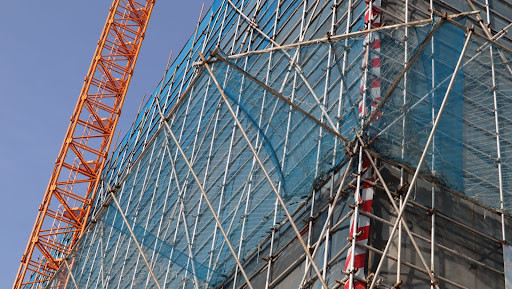Reducing Carbon Footprints In Construction: Strategies For Developers And Contractors

Construction is responsible for nearly 40 percent of global greenhouse gas emissions, according to the United Nations Environment Programme. This figure includes operational emissions, such as energy used to heat and cool buildings, and embodied carbon, which stems from material production, transportation, and installation. For developers and contractors, addressing these challenges is critical to meeting environmental goals and aligning with global sustainability standards.
Reducing carbon emissions requires a multifaceted strategy. Targeted decisions, from selecting low-carbon materials to rethinking construction processes, can have measurable impacts. Developers and contractors play pivotal roles in driving these changes, influencing how buildings are designed, constructed, and performed over their lifecycle.
Selecting Sustainable Materials
Material choices significantly affect a building's carbon footprint. Across all project stages, adopting sustainable materials can reduce carbon emissions by an average of 27-35%. For instance, a widely used material, concrete, is responsible for around 8% of global carbon dioxide emissions due to its energy-intensive production process. Opting for alternatives such as Autoclaved Aerated Concrete (AAC), which consumes 60% less embodied energy and emits 55% fewer greenhouse gases during production, or Coal Ash Gangue Hollow Bricks with 60% repurposed ash content, can cut emissions by 30-50 percent compared to traditional options.
AAC, for example, is lightweight, offers excellent thermal insulation, and reduces the amount of energy needed to maintain indoor temperatures. Similarly, coal ash gangue bricks repurpose industrial waste, providing a dual benefit of reducing landfill use and lowering embodied carbon. Incorporating these materials into large-scale projects, such as the Fuyang Red Maple Forest Wellness Complex, has resulted in an absolute annual reduction of 202,580 metric tons of CO₂, a 47% improvement over standard buildings in the operational stage
Collaboration with suppliers to source these materials locally can further reduce transportation emissions, cutting costs and promoting regional economic growth.

Optimising Construction Processes
Streamlined construction practices can minimise waste and energy consumption. Prefabrication and Modular Integrated Construction (MIC) techniques have been shown to reduce construction waste by 45% by manufacturing components off-site and assembling them on-site. This approach also lowers material waste while cutting emissions associated with transportation.
Additionally, incorporating renewable energy systems, such as solar panels or on-site rainwater recycling, supports sustainable operations. Incorporating solar panels has shortened project payback periods to an average of 3-5 years by significantly reducing operational energy costs. For example, integrating solar water heaters in projects has decreased energy consumption by up to 70 percent compared to traditional heating systems.
Rainwater harvesting systems, meanwhile, can supply water for dust control and other site needs, significantly reducing reliance on external sources. In multiple projects, underground storage tanks have been used to capture rainwater, reducing overall water consumption and minimizing resource waste during construction.
Implementing Green Building Certifications
Green building certifications like LEED or China's Green Building Label offer a comprehensive framework for reducing carbon footprints and improving sustainability. Certified green buildings have demonstrated a 20-52% reduction in operational carbon emissions through passive design strategies, advanced insulation, and renewable energy integration.
While tenants directly benefit from lower energy costs, developers can leverage these certifications to enhance the market appeal of their properties. Certified green buildings are increasingly attracting environmentally conscious tenants and investors, driving property values and occupancy rates while aligning with global carbon reduction targets. Contractors can also use these certifications as a guide to ensure projects meet sustainability standards and deliver long-term value.
Strengthening Supply Chain Management
Data analytics tools can help developers forecast material needs more accurately, reducing surplus inventory and waste. Blockchain technology can further enhance transparency in supply chains by verifying certifications, tracking carbon footprints, and monitoring environmental performance. This integration builds trust among stakeholders while promoting more sustainable procurement practices.
Long-Term Benefits of Sustainable Construction
Beyond environmental impacts, reducing carbon footprints brings tangible economic and social advantages. According to a Global Alliance for Buildings and Construction report, energy-efficient projects yield 20-30 percent operational savings over their lifecycle.
Additionally, adopting sustainable construction practices contributes to broader public health benefits by reducing air and noise pollution during construction. Communities surrounding project sites benefit from cleaner environments and reduced disruptions, fostering goodwill and stronger partnerships between developers, contractors, and local stakeholders.
Practical Steps for a Low-Carbon Future
Reducing carbon emissions in construction is not a singular effort but an ongoing process involving collaboration across all project phases. By integrating advanced insulation, low-carbon materials, and energy-efficient solutions, developers have successfully reduced operational costs and shortened return on investment periods to an average of 3-5 years.
From choosing low-impact materials to adopting advanced technologies, developers and contractors can implement practical solutions that align with environmental goals and market demands.
The construction industry can make meaningful contributions to global climate objectives while enhancing project performance and value for years to come by prioritising sustainable practices today.
© Copyright 2025 IBTimes AU. All rights reserved.




















